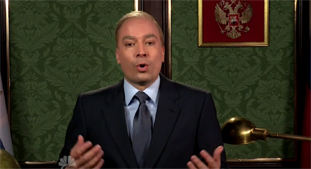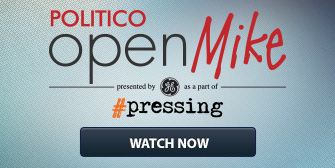Dems’ midterm strategy: Triage

House Democrats, battered by Koch brothers ads and facing a grim outlook for the midterms, are providing the clearest indication yet of how they plan to respond: By shoring up imperiled incumbents and only the most promising challengers, but most likely leaving some of the party’s upstart hopefuls to fend for themselves.
The aim of the strategy, detailed in nearly two dozen interviews with party officials and strategists, is a tacit acknowledgement of the ominous political environment Democrats are up against this year. The goal is to stop Republicans from padding their 17-seat edge and keep the party within striking distance of the majority in 2016, a presidential election year that could well be more favorable to Democrats.
Continue ReadingOn Friday, House Majority PAC, a leading Democratic super PAC and one of the biggest players in congressional races, will begin placing its first round of TV ad reservations, according to an outline first shared with POLITICO. Of the 24 districts the group is reserving commercial time in, 18 of them are occupied by party incumbents. The ads will begin running around Labor Day, when the midterm sprint begins in earnest.
(PHOTOS: House Majority PAC's fall TV ad buys)
Some of the reservations are intended to prop up lawmakers long seen as vulnerable, such as Massachusetts Rep. John Tierney and Minnesota Rep. Rick Nolan. But the group says it’s learned a valuable lesson from 2010, when the party waited until too late to help incumbents they believed were safe but who ended up losing. House Majority PAC will buttress several Democrats who’ve been favored to win, such as New York Rep. Dan Maffei and Florida Rep. Patrick Murphy.
Ali Lapp, the group’s executive director, said the initial investments totaled $6.5 million but that she ultimately expected to spend between $45 million and $50 million. By reserving ad time at a relatively early point in the year, she said she was laying down a marker on where her group would play in the fall.
“In a midterm election things are tough for Democrats and we’re seeing an influx of cash by the Koch brothers. It’s making things even tougher,” said Lapp, who served as a top lieutenant to then-Democratic Congressional Campaign Committee Chairman Rahm Emanuel during the party’s 2006 House takeover. “We need to shore up our members who represent marginal districts.”
(Also on POLITICO: Race for next DCCC chair wide open)
Operatives working with Democratic groups say they’ve been tasked with examining how much damage incumbents have incurred from a wave of attacks funded by Americans for Prosperity, a Koch brothers-funded outfit. They’ve been conducting polling much earlier in the election year than they initially anticipated.
Democrats privy to the survey data say West Virginia Rep. Nick Rahall, a 19-term incumbent who’s been pummeled by the Koch ads, now trails his Republican opponent significantly. Two other Koch targets, Arizona Reps. Ann Kirkpatrick and Ron Barber, have seen their poll numbers drop but are in better shape than Rahall.
The focus on protecting incumbents is fueling anxiety among Democratic challengers that they won’t receive campaign resources from the national party.
(QUIZ: How well do you know the Koch brothers?)
It’s not uncommon for the DCCC, the party’s House political arm that assesses Democratic candidates on the strength of their fundraising performance and campaign organization, to weed out underdogs. But in interviews, some of the party’s campaign veterans said they felt the committee was being far more stringent than in past years.
One candidate in a top-tier race, who requested anonymity to discuss internal conversations, said he’d been told by DCCC officials that they intended to devote resources to a sparse number of GOP-held seats and that he’d have to work to make the cut.
“There’s just this knowledge that it’s a shrinking map,” said a campaign manager for another Democratic candidate running in one of the nation’s most closely watched House races. “If you’re not meeting [their] benchmarks, they’re saying you’re not going to be in their pool of candidates.”
(Also on POLITICO: Obama: Dems should 'defend and be proud' of ACA)
DCCC officials have yet to announce its TV ad reservations, but say the committee will have more than enough cash to wage a vigorous offensive in districts across the country. The committee has posted strong fundraising numbers this election, raising $17 million more than its Republican counterpart through the end of February.



















Please see the Comments FAQ if you have any additional questions or email your thoughts to commentsfeedback@politico.com
comments powered by Disqus